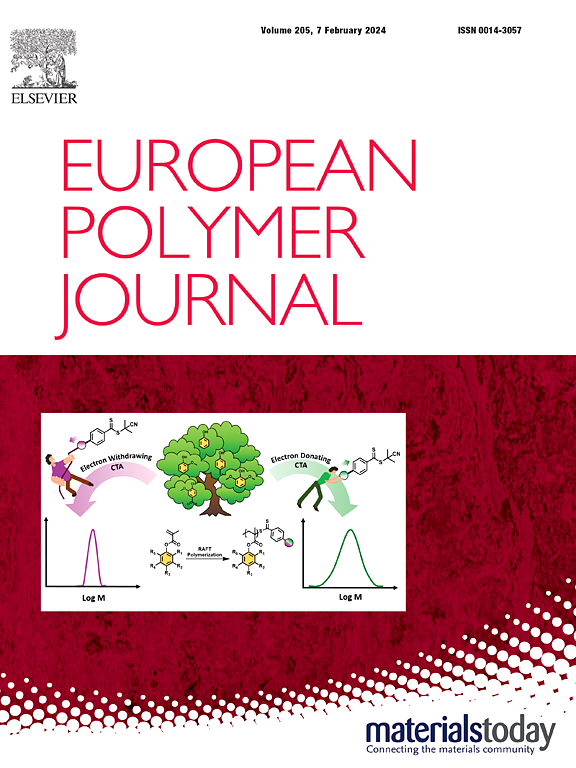Supramolecular microgel from cellulose and gelatin via host–guest interaction: Formation and sustained release application
IF 5.8
2区 化学
Q1 POLYMER SCIENCE
引用次数: 0
Abstract
Herein, β-cyclodextrin-coupled cellulose (β-CD-Cel) copolymer microgel was synthesized by cross-linking copolymerization in the NaOH/urea water system. Then, cellulose/gelatin supramolecular microgel (CGSM) with vesicle morphology was obtained by utilizing the host–guest interaction between β-CD cavity and phenylalanine, tryptophan, and tyrosine of gelatin structure. Furthermore, the hydrophobic active substance vanillin was encapsulated into CGSM supramolecular microgel by ultrasonic method to obtain a long-lasting fragrance-released microgel. FTIR, XRD, UV–vis, fluorescence spectra, and 1H NMR provided evidences for the formation of CGSM supramolecular microgel and the supramolecular interaction between cellulose and gelatin molecules. SEM and DLS confirmed the formation of supramolecular microgel with vesicle structure. Benefiting from the core, residual β-CD cavity, and rich network structure of CGSM supramolecular microgel, the efficient loading and long-lasting release for vanillin was achieved. Compared with β-CD-Cel microgel, CGSM supramolecular microgel showed a higher loading efficiency (98.58 %) for vanillin, and the vanillin retention rate still reached 53.87 % after 196 h of release. After being sprayed on the fabric surface, the fragrance release time of long-lasting fragrance-released CGSM microgel is more than 60 days, and 20 % vanillin is still retained on fabric after washing ten times.
求助全文
约1分钟内获得全文
求助全文
来源期刊

European Polymer Journal
化学-高分子科学
CiteScore
9.90
自引率
10.00%
发文量
691
审稿时长
23 days
期刊介绍:
European Polymer Journal is dedicated to publishing work on fundamental and applied polymer chemistry and macromolecular materials. The journal covers all aspects of polymer synthesis, including polymerization mechanisms and chemical functional transformations, with a focus on novel polymers and the relationships between molecular structure and polymer properties. In addition, we welcome submissions on bio-based or renewable polymers, stimuli-responsive systems and polymer bio-hybrids. European Polymer Journal also publishes research on the biomedical application of polymers, including drug delivery and regenerative medicine. The main scope is covered but not limited to the following core research areas:
Polymer synthesis and functionalization
• Novel synthetic routes for polymerization, functional modification, controlled/living polymerization and precision polymers.
Stimuli-responsive polymers
• Including shape memory and self-healing polymers.
Supramolecular polymers and self-assembly
• Molecular recognition and higher order polymer structures.
Renewable and sustainable polymers
• Bio-based, biodegradable and anti-microbial polymers and polymeric bio-nanocomposites.
Polymers at interfaces and surfaces
• Chemistry and engineering of surfaces with biological relevance, including patterning, antifouling polymers and polymers for membrane applications.
Biomedical applications and nanomedicine
• Polymers for regenerative medicine, drug delivery molecular release and gene therapy
The scope of European Polymer Journal no longer includes Polymer Physics.
 求助内容:
求助内容: 应助结果提醒方式:
应助结果提醒方式:


